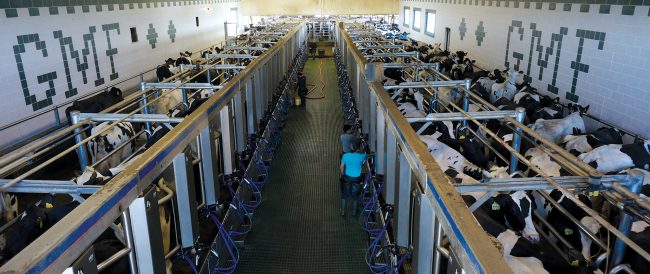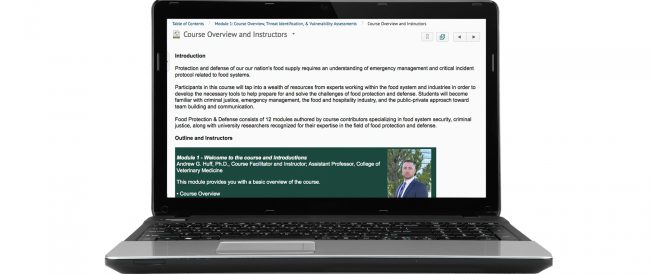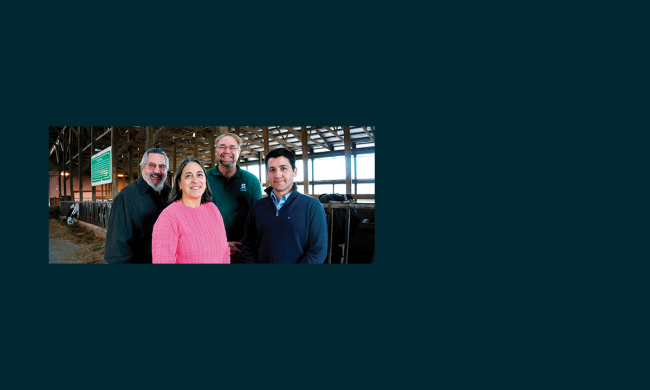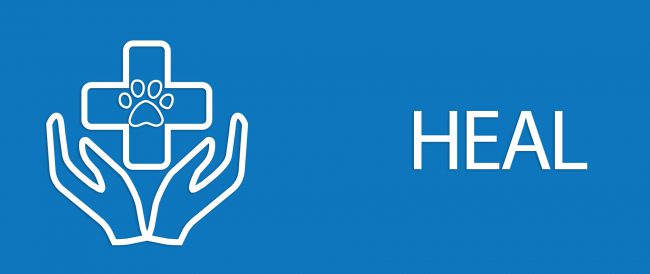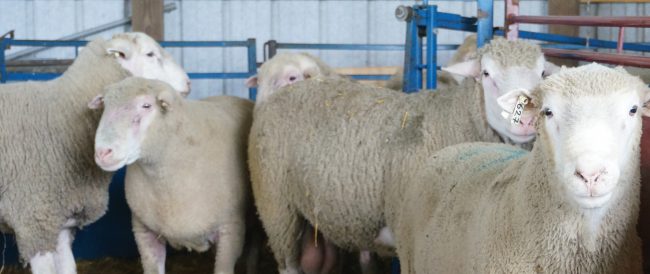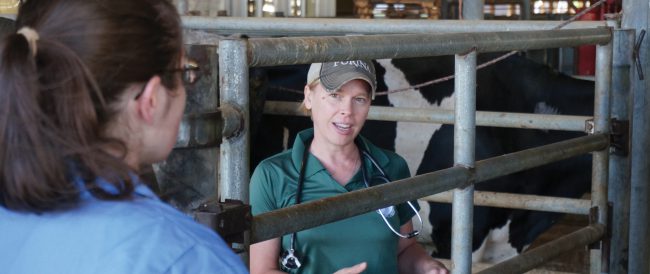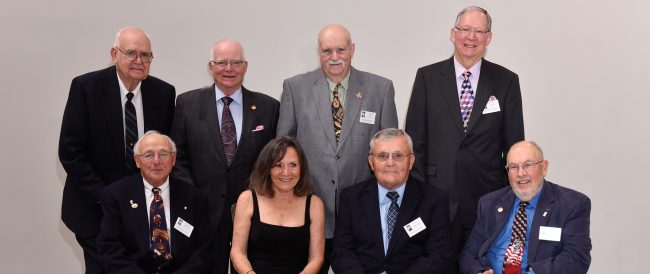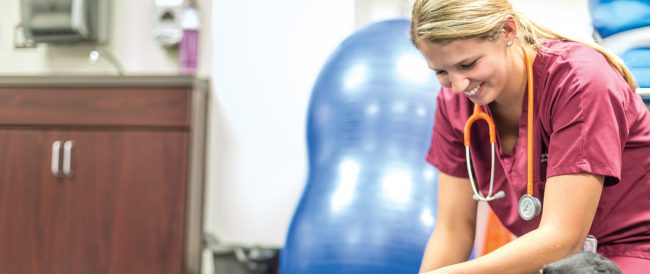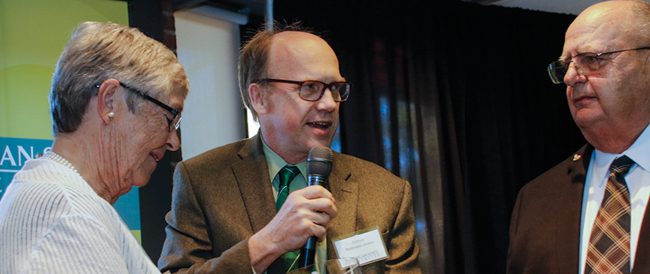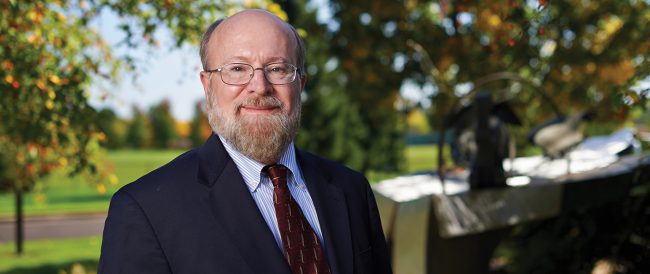 Read More
Read More
Clerkship Series Teaches Professional Skills To Food Animal Veterinary Students.
It’s 9:00 a.m. at the United Dairy Industry of Michigan (UDIM). UDIM is a non-profit organization that communicates the benefits of consuming Michigan dairy products with health professionals, educators, school nutrition directors, academia, industry, consumers, and media. Dr. Jennifer Roberts, assistant professor for the Department of Large Animal Clinical Sciences, sips her coffee as 12 production medicine students prepare for the day ahead at UDIM.
“What’s the story of food production?” Roberts asks the students. A pause fills the vast office space before Jolene Griffin, director of Industry Relations at UDIM, adds, “What would you say to a mother who asked you that question, or a blogger? To someone who comments on your Facebook page?” The students are left to ponder those questions before mock interviews begin.

The students are at UDIM as a portion of the four-part Production Medicine Clerkship Series. The Clerkship Series is 12 weeks and consists of 4 rotations: Production Medicine I, Production Medicine II, Ruminant Health Problem Solving, and Food Animal Theriogenology. Students start out learning basic skills, like how to problem solve and advocate for the agricultural industry. Then, they go on to learn advanced medical skills for specific species, plus communication tactics and other techniques that are key for food animal veterinarians.
Roberts instructs two clerkships within the Series. One of the clerkships, Production Medicine I, focuses on the basic skills required of veterinarians who work in production medicine. Focal points include clinical expertise, speaking Spanish, and the development of appropriate and effective communicative interactions, such as those that occur on social media.
Media training is a unique and critical component of Production Medicine I. “The communication training lesson is centered on a partnership between the College and UDIM,” says Roberts. “UDIM works on behalf of Michigan’s dairy farm families to connect consumers to farmers and the food they provide, so production medicine students benefit from having training in various communication scenarios and relationships.”
UDIM’s role in the dairy industry, paired with Roberts’ expertise, allows students to reference credible sources for information about dairy foods while learning how to communicate the processes of animal care and production to the public. These tools teach students how to field questions they may receive about food and farming through in-person and online conversations they may have with friends, family, peers, and future veterinary clients.
At 10:00 a.m., the cameras start rolling. A UDIM team representative plays the role of a community member and asks the students questions about food animals and agriculture. The students give their answers one-by-one while being recorded on video.
The source material for these questions derives from Roberts’ and UDIM’s experience contributing to public communication for the food animal industry. “The UDIM staff and I use real-life examples of situations we’ve encountered and ways that we have been able to communicate with the public about farm animal care and welfare,” says Roberts.

After the students review their mock interviews with the UDIM team, Roberts explains that as veterinarians, they have a responsibility to educate the public as well as those who work in the food animal industry. In addition to media-related skills and practices, students also learn Spanish language skills.
“There is a large population of Spanish-speaking farm workers in the dairy industry. Regarding food safety, it is important that our graduates can communicate with all their coworkers,” says Roberts. “This ensures that the animals are cared for, which is a major factor in food safety.”
Dr. Alex Strauch, who graduated from the College in 2017, arrives at Herbruck’s Poultry Ranch in Saranac, Michigan no later than 8:00 a.m. sharp every day. Armed with a thermos in one hand and blood test results in another, Strauch is ready to start the day. One morning, he was about to begin analyzing egg production sheets from the previous day when he received a call from a concerned barn worker. “Yo hablo español (I speak Spanish),” Strauch says to the employee. “¿Que esta pasando (What is happening)?” The employee launched into a dialogue with Strauch about a temperature swing that may have caused the hens to back off from their feed intake.
“The media training and farm-based Spanish workshops that I took through Dr. Roberts’ Production Medicine Clerkship emphasized the importance of knowing how to communicate."
— Dr. Alex Strauch
After graduating from MSU, Strauch became the staff veterinarian at Herbruck’s. In this role, he wears multiple hats: he oversees the biosecurity program and animal welfare. He also handles specific public relations issues for the farm, such as responding to customer inquiries about product quality.
“The media training and farm-based Spanish workshops that I took through Dr. Roberts’ Production Medicine Clerkship emphasized the importance of knowing how to communicate,” says Strauch.

Using Social Media to Tell Dairy’s Story is next on the agenda for the media training lesson. Students will see examples of what appropriate and useful social media interactions look like for a food animal production veterinarian. Laser pointer in hand, Roberts begins the presentation by pointing out the Facebook page of a former student, Dr. Marissa Hake, as an example of why social media and digital communication are key in this industry.
“As veterinarians in food animal production, it’s our responsibility to field questions about agriculture from our consumers. Scientific knowledge combined with animal care expertise places students in leadership positions,” says Roberts. “From the Production Medicine Series, students can take the tools they were given into their veterinary practices to educate the public, accurately representing the food animal production and veterinary industries.”
Hake, staff veterinarian for Strauss veal facilities in North Manchester, Indiana, scrolls through her Calf Vet Facebook page. The page, which she originally created to service agricultural bloggers who toured their facilities, has become a vehicle for her to communicate with the public about production medicine. She uses social media to teach consumers about how the food from the farm animals she cares for is produced. It also allows her to act as a trusted source of information about the industry and advocate for animal welfare.

Social media acts as a main resource for consumers who want to learn about how their food is produced. Knowing that animal-protein food production is an emotional topic, especially on social media, Hake maintains the themes of accuracy, positivity, and relevancy when she posts on her social media pages. “Knowing how to avoid and handle challenging social media situations is crucial for a veterinarian who represents a farm,” says Hake.
Hake, who graduated from the College in 2015, participated in the Production Medicine Clerkship Series. Today, she makes heavy use of the media skills she learned from Roberts. “The media class instructed by Dr. Roberts and the partners at UDIM taught me how to address consumer concerns, how to frame and deliver information, and where to go for more resources,” says Hake.
The Production Medicine Clerkship Series is designed to help aspiring food animal veterinarians advocate for the agricultural industry by acting as a voice of the veterinary profession. “In addition to the communication piece, the series teaches students how to maintain animal health and welfare in the farm animal populations that are under the care of veterinarians,” says Roberts. Though the media training is only one aspect, telling the story of food production is a constant theme throughout the four clerkships.
“The media class taught me how to address consumer concerns, how to frame and deliver information, and where to go for more resources.”
— Dr. Marissa Hake
Overall, the goal for Production Medicine I and the media training is for students to learn transparency about production practices when communicating with the public by acknowledging the “why” behind food animal production veterinary methods and it’s consumers’ concerns. The ability to educate others—fellow veterinarians, farmers and their employees, and the public—leads to the success of food animal veterinarians and their industry.
“It is rewarding to instruct in a program that is so well received by the students,” says Roberts. “It is even more rewarding to hear from students, past and present, talk about how they use the scientific, animal care, communicative, and leaderships skills that we taught them in the Series to be advocates—not only for consumers, but for the agricultural and veterinary industries as well.”



